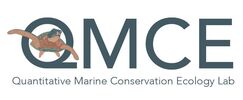Investigators: Susan Piacenza, Linsey Arnold, Selina Heppell (OSU)
During my Ph.D., I also participated in a working group to conduct population assessments on data-poor nearshore species in Oregon. This work was supported by an Oregon Sea Grant ($163,000), for which I was a key co-author, and consisted of five graduate students, and two undergraduate students, and one faculty advisor. Scientifically sound and transparent evaluation of the status of Oregon’s nearshore fisheries resources is essential for effective management. Recent advances in assessment techniques for data-poor species could allow the harvest caps set by the Oregon Department of Fish and Wildlife (ODFW) to reflect a true local assessment process by working with the available data, and therefore within limited budget constraints. To this end, we performed gap and productivity-susceptibility analyses, and data-poor assessments using data specific to Oregon on several nearshore species. We ranked nearshore species on the amount of data available to conduct regional assessments and performed complete population assessments on Black Rockfish, a data moderate species, and partial assessments on several other data-poor species. In addition, we developed and conducted a Stock Assessment 101 workshop geared at making the stock assessment process and data poor methods more comprehensible and transparent to stakeholders, such as local fishers. ODFW biologists and managers benefitted from this analysis by having a better understanding of the data available for nearshore species, and how stock assessments for data-poor nearshore species can be applied at a smaller geographic scale. In the future, I plan to pursue developing and applying data-poor assessment methods for fisheries in Florida and the Caribbean, where data tends to be extremely limited, to support sustainable harvest.
During my Ph.D., I also participated in a working group to conduct population assessments on data-poor nearshore species in Oregon. This work was supported by an Oregon Sea Grant ($163,000), for which I was a key co-author, and consisted of five graduate students, and two undergraduate students, and one faculty advisor. Scientifically sound and transparent evaluation of the status of Oregon’s nearshore fisheries resources is essential for effective management. Recent advances in assessment techniques for data-poor species could allow the harvest caps set by the Oregon Department of Fish and Wildlife (ODFW) to reflect a true local assessment process by working with the available data, and therefore within limited budget constraints. To this end, we performed gap and productivity-susceptibility analyses, and data-poor assessments using data specific to Oregon on several nearshore species. We ranked nearshore species on the amount of data available to conduct regional assessments and performed complete population assessments on Black Rockfish, a data moderate species, and partial assessments on several other data-poor species. In addition, we developed and conducted a Stock Assessment 101 workshop geared at making the stock assessment process and data poor methods more comprehensible and transparent to stakeholders, such as local fishers. ODFW biologists and managers benefitted from this analysis by having a better understanding of the data available for nearshore species, and how stock assessments for data-poor nearshore species can be applied at a smaller geographic scale. In the future, I plan to pursue developing and applying data-poor assessment methods for fisheries in Florida and the Caribbean, where data tends to be extremely limited, to support sustainable harvest.
